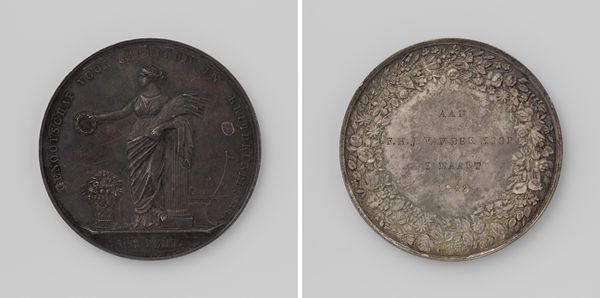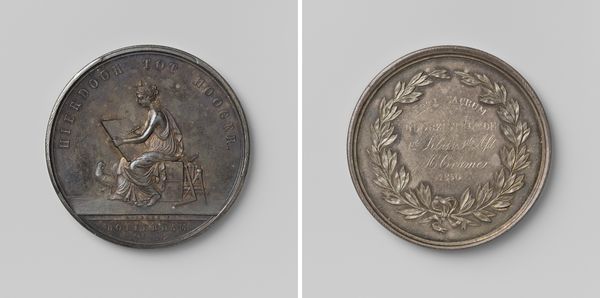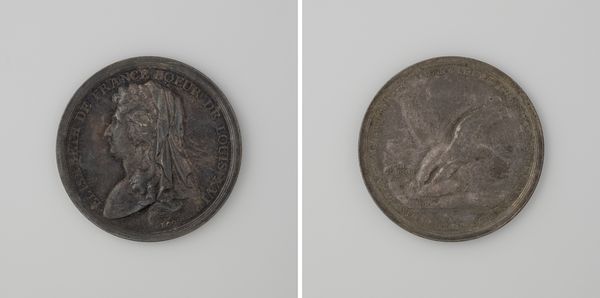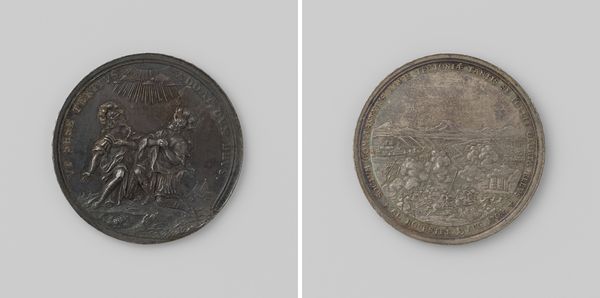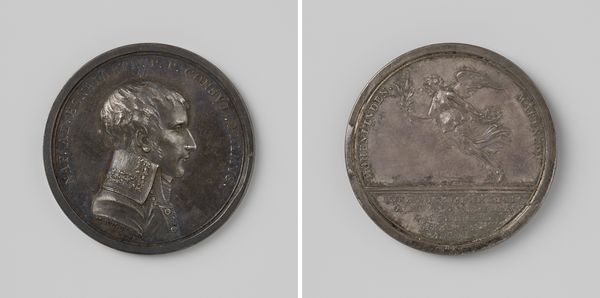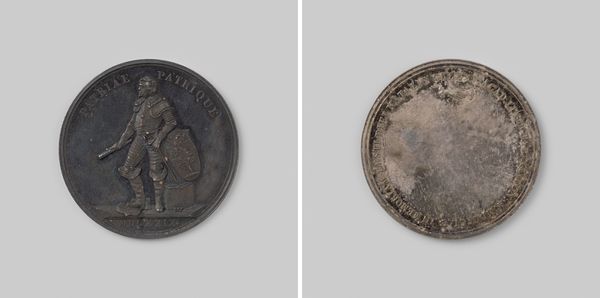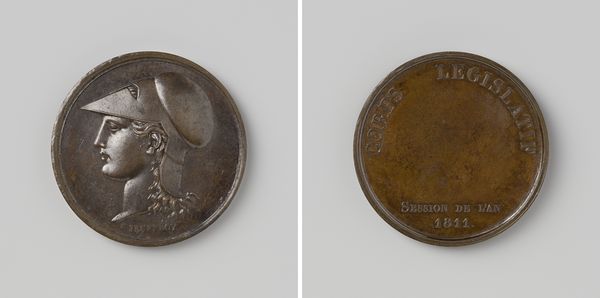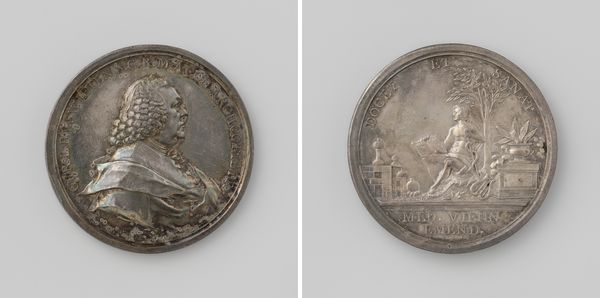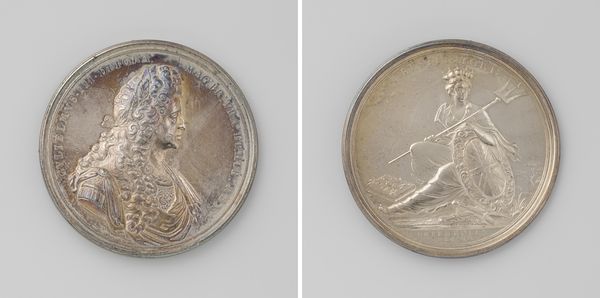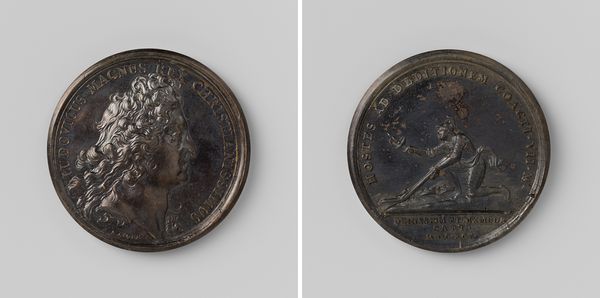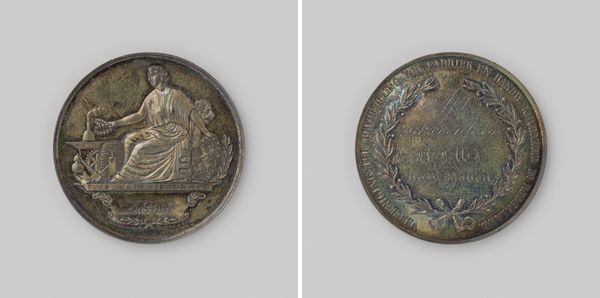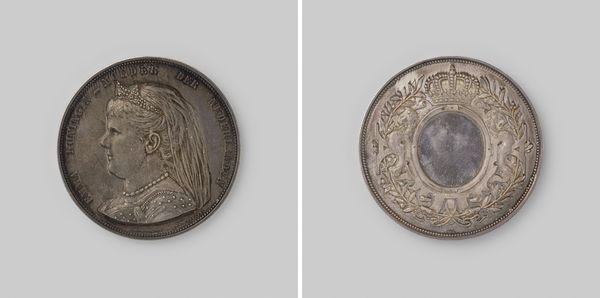
Bernardus Franciscus Suerman, vijftig jaar hoogleraar in de geneeskunde aan de universiteit van Utrecht, penning geslagen op last van de Senaat 1859
0:00
0:00
davidvander18041879kellen
Rijksmuseum
metal, bronze, sculpture
#
portrait
#
neoclacissism
#
metal
#
sculpture
#
bronze
#
sculpture
Dimensions: diameter 5.8 cm, weight 55.70 gr
Copyright: Rijks Museum: Open Domain
Curator: Here we have a bronze medal created in 1859 by David van der Kellen, commemorating Bernardus Franciscus Suerman's 50-year professorship at the University of Utrecht. Editor: The stark profile immediately makes me think about the power dynamics embedded within academic institutions during this era. It’s so stoic and…imposing. Curator: It adheres quite strongly to neoclassical ideals. Consider the composition—the meticulous details, the inscription's careful arrangement encircling Suerman’s portrait, lending the work a dignified air of importance and intellectual rigor. Editor: Yet, doesn't that very control mask other realities? Who were Suerman's teachings for? Who was excluded, not just from the university but also from representation in these celebratory forms? What sociopolitical context made a 50-year professorship such a celebrated achievement? Curator: The clean lines and precise engraving surely celebrate rationalism, key to Neoclassical art and the enlightenment project itself. Notice how his gaze and posture suggests that his mind is composed and in pursuit of pure knowledge. Editor: But such "pure knowledge" often carries a very specific, socially constructed perspective. And if this piece commemorates Suerman's legacy, shouldn't we examine how that legacy impacted all members of society and acknowledge what histories or injustices may lie underneath this celebrated achievement? Curator: I admit such readings can add valuable layers. Yet appreciating its formal excellence isn't endorsement. Editor: I would add it can, indirectly, depending on the historical view of the audience looking at it and considering its importance within the scope of historical accuracy. Curator: A worthwhile reminder, to seek fuller stories within even the most precisely rendered of surfaces. Editor: Absolutely, art invites those critical dialogues. It's in our duty to provide an understanding of art and history combined.
Comments
No comments
Be the first to comment and join the conversation on the ultimate creative platform.
